Surajkund: A melange of culture, tradition, and talent
by Swasti PachauriWritten by Swasti Pachauri | New Delhi | Updated: February 14, 2020 3:52:13 pm
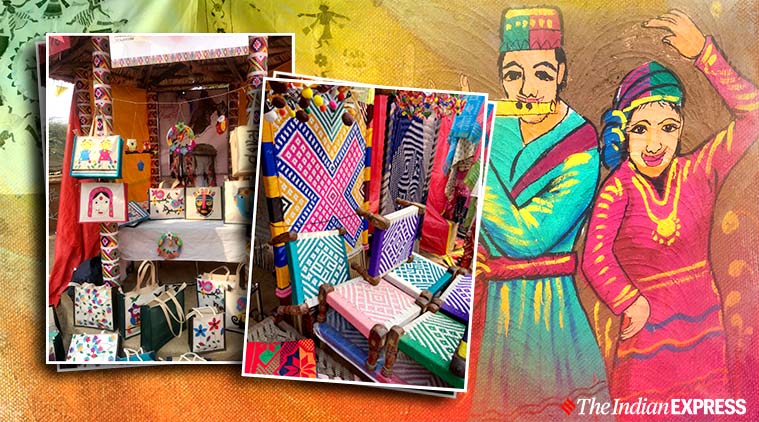
Every year the entire fair is decorated with much finesse with floral wall hangings on trees, kites, lanterns, rangolis, natural and artificial flowers, wall paintings etc. (Photos: Swasti Pachauri; designed by Gargi Singh)
Nestled in the backdrop of Aravallis, Surajkund comes to life each year with the international Crafts Mela that is organised by the Haryana government. The glorious landscapes welcome artists, tourists, and visitors from across the world to partake in one of the most prominent spectacles envisioned around the promotion of crafts-based livelihoods.
At the 34th edition of the mela that began February 1, a pavilion amidst babool trees and floral décor, crafts, textiles, handlooms and furnishings offer a radiant treat to the eyes. There are woollens made of yak wool, patterned shawls and stoles from the hills, steel and iron utensils, nests for birds, papier mâché, miniature paintings, handlooms, sarees, local delicacies and global specialities, among other things. Additionally, rare products from states such as Uttar Pradesh, Odisha, Maharashtra, Rajasthan, Punjab and Telangana as also from countries such as Swaziland, Uzbekistan, Turkey, and many more offer delight to the connoisseur of art and craft.
This year, the theme state is Himachal Pradesh. Every year the entire fair is decorated with much finesse with floral wall hangings on trees, kites, lanterns, rangolis, natural and artificial flowers, wall paintings etc.
Let’s take a look at some rare crafts and art forms at the mela this year (this is not an exhaustive list)
Pine needlecrafts, Kangra, Himachal Pradesh
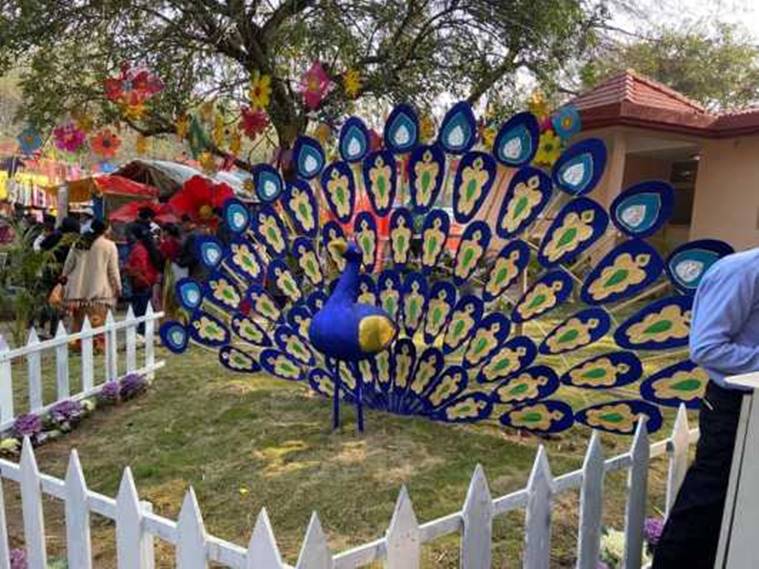
At the 34th edition of the mela that began February 1, a pavilion amidst babool trees and floral décor, crafts, textiles, handlooms and furnishings offer a radiant treat to the eyes.
Sudershna Kumari’s start-up ‘Him Pine’ meaning ‘pine from the Himalayas’ employs women to weave pine needles into beautiful handicrafts and utility items in the Kangra district of the state. The pine needles, locally known as ‘cheed’, are woven into decorative crafts like trays, vases, pen stands, bowls, coasters, cups, etc. The process entails collecting dry pine leaves, treating those with water and detergent for any impurities. The pine needles are then treated with neem leaves and glycerine and finally dyed in either herbal colours (turmeric), or artificial ones.
The needles/leaves are then woven with other ingredients like Sheesham wood, pearls, threads etc. Since the work is intricate and delicate, products usually take six-eight hours to complete. Many women across the state have benefited from these ecological crafts and earn up to Rs 6,000-7,000. On what inspired her to practice this, Kumari reminisces the ancestral ‘Bhaggad’ grass crafts from the hills which the elderly would use to make products and décor.
Peedha furnishings, Hisar, Haryana
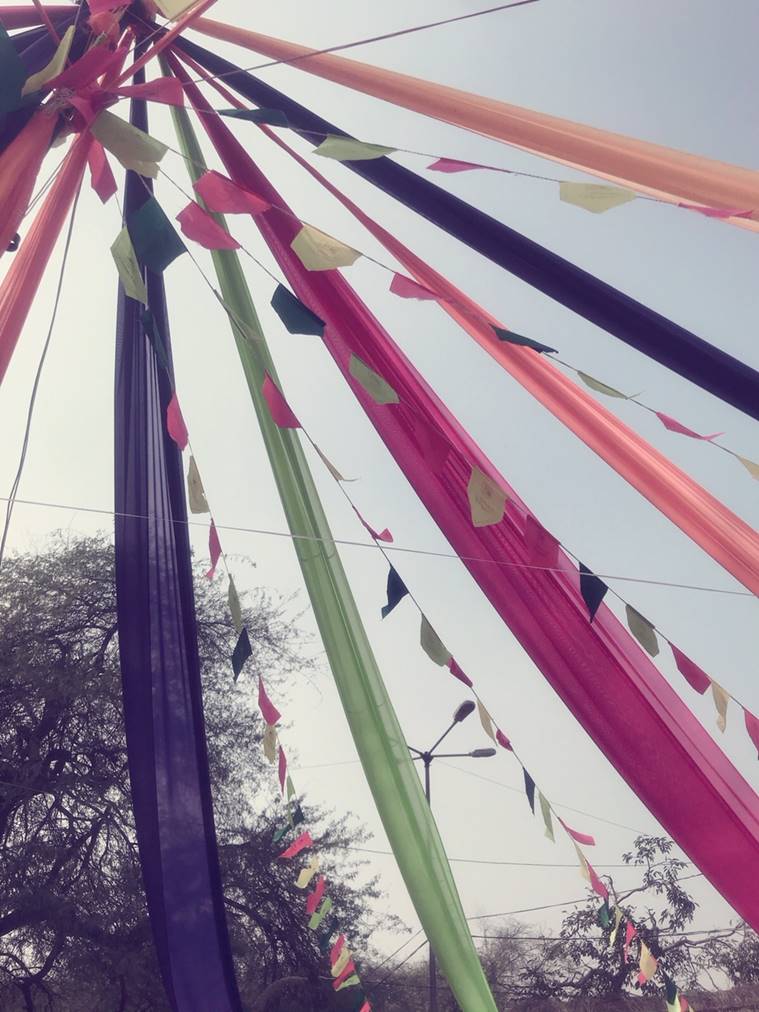
Nestled in the backdrop of Aravallis, Surajkund comes to life each year with the international Crafts Mela that is organised by the Haryana government
Bhagat Ram Yadav specialises in weaving and knitting fiber from Sheesham, Sal, and silk into beautiful furnishings like charpoy, stools and ‘peedhas’, which are small rectangular seats. An intensive process; it typically takes a day or so to weave these ‘peedhas’ that are priced at ₹1800 and have ‘Ghungharoos’ stitched under. In the words of Yadav, “ghungharoo ki awaaz suhani lagti hai.” – on being asked the significance of these melodious accessories in these furnishings.
Additionally, Yadav’s company makes a traditional gifting item called “phooljhari”, or “jhaalar” – danglers/lantern/wall hangings — made of paper, beads, and plastic triangular designs. It is interesting to note that Haryana has very few arts and craft forms of its own with Phulkari Dupattas in a few pockets; and grass crafts, jootis, jute crafts etc dispersed across the state. At the fair, terracotta, wooden crafts, products made by inmates of Haryana prisons are other items for sale and display. The state government could undertake more initiatives to support artists such as Yadav who specialise in these aesthetically vibrant furnishings and build crafts from the state.
Karvati Saris, Vidarbha, Maharashtra
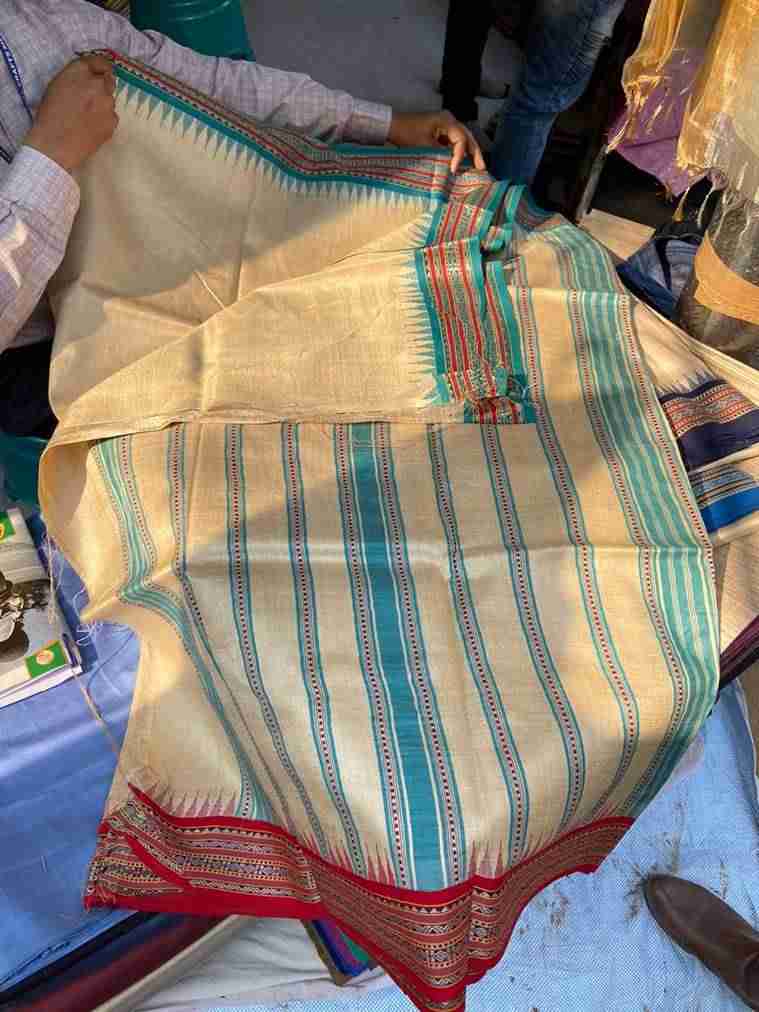
Many communities from Nagpur and Bhandara practice the weaving of Karvati sarees from Tusser.
While Vidarbha region suffers from grave agricultural distress; it also boasts of rare Karvati sarees which are popular for their borders. These sarees made of silk with zig-zag patterns use the triple techniques of weaving – karvat, leheri, jehali. Many communities from Nagpur and Bhandara practice the weaving of Karvati sarees from Tusser. The government of Maharashtra is undertaking several steps to revive and promote these unique sarees. Another step could be the promotion of livelihoods based on Karvati weaving in areas that ae in chronic agricultural distress to diversify and promote livelihoods, wherever possible.
Chamba Rumal, Himachal Pradesh
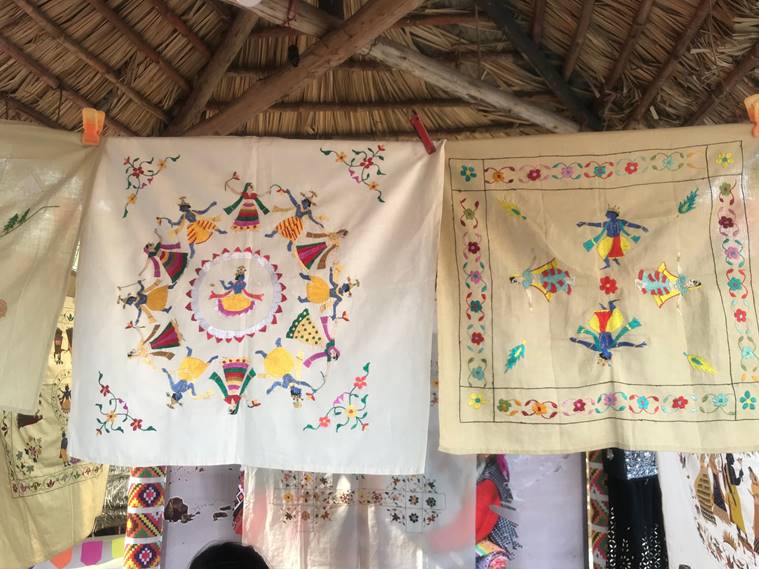
The designs are inspired by scenes in Ramayana and Mahabharata.
Anita as a part of Maa Durga Self Help Group (SHG) has been practising embroidery on ‘Chamba Rumal’ for 18 years. A state awardee, coming from Pukhri tehsil in Chamba, Anita’s SHG provides employment to women — all of them specialising in making beautiful rumals (handkerchiefs) characterised with embroidered designs and miniature art inspired from Pahari paintings. The designs are inspired by scenes in Ramayana and Mahabharata.
One of the challenges, however, that Chamba Rumal artists face is the absence of wide market opportunities. Chamba Rumals deploy intricate embroidery and depending on their sizes take several days to finish. However, since the art form is vintage and is a carrier of heritage; governments and the industries must come forward to provide ample opportunities to artists like Anita. The art form already has the Geographical Indication (GI) tag and with more businesses purchasing these arts for instance, toward corporate gifting, or under the aegis of CSR may contribute to livelihoods upliftment of scores of artists of Chamba Rumal.
Bead jewellery, Swaziland

Handicraft from the country offers beautiful bead earrings, necklaces, wooden jewellery, and many other products.
At the international pavilion, the counter from Swaziland is a delight for beadwork enthusiasts. SWAB Handicraft from the country offers beautiful bead earrings, necklaces, wooden jewellery, and many other products. The danglers are priced at ₹ 400 each.
Other international products include woollen shoes, herbal products, shea butter from Africa, Turkish lanterns and lightings, textiles, handlooms etc. Surajkund offers a rare glimpse of artists weaving, painting, and practising their crafts- all under one roof, and provides an economic platform to scores of artisans. Fairs like Surajkund play a pivotal role in the economics of crafts by enhancing livelihoods of artisans, strengthening their confidence, and boosting the country’s cultural capital.
📣 The Indian Express is now on Telegram. Click here to join our channel (@indianexpress) and stay updated with the latest headlines
For all the latest Lifestyle News, download Indian Express App.
© IE Online Media Services Pvt Ltd